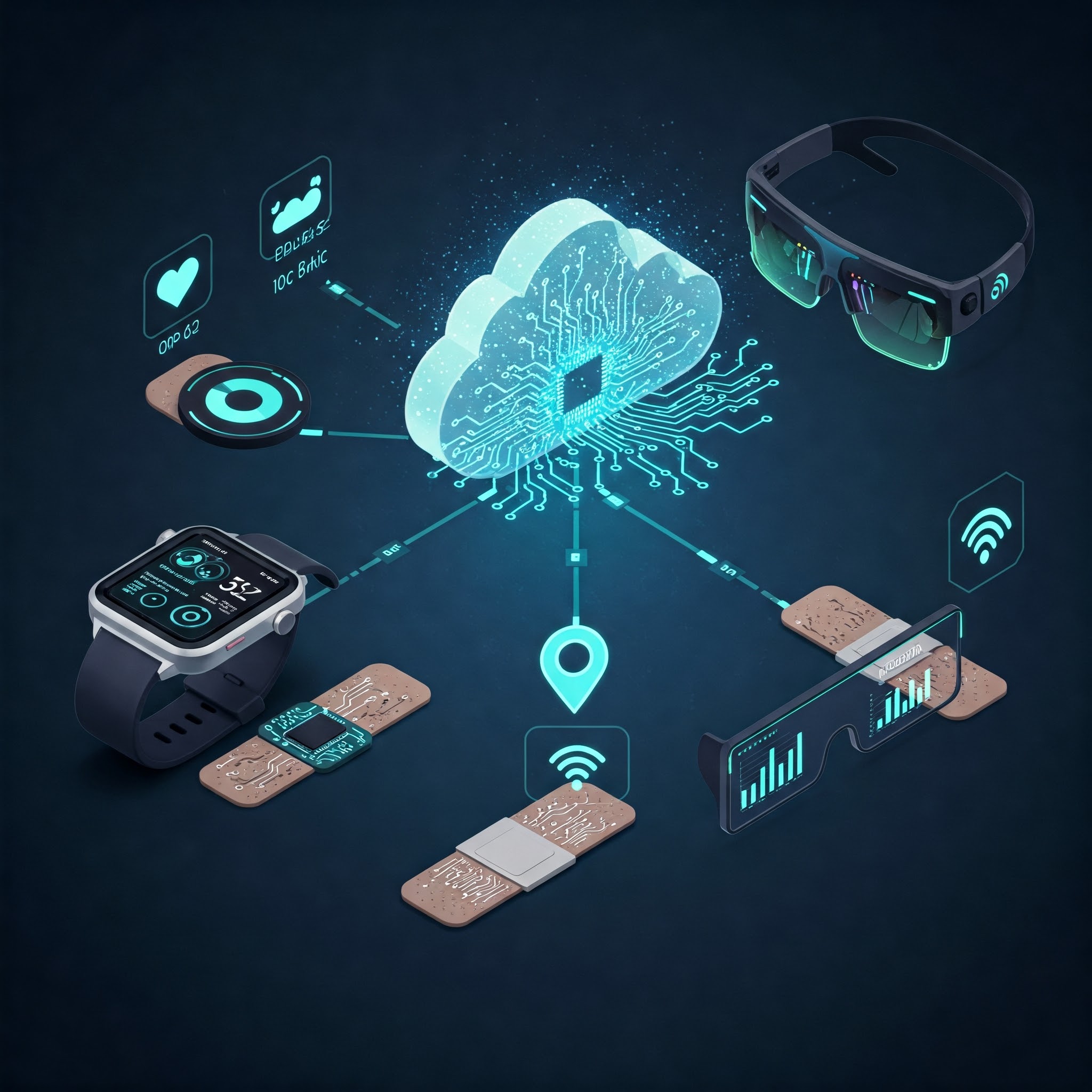Wearable technology has rapidly transitioned from a niche interest to a mainstream necessity. From fitness trackers and smartwatches to advanced medical monitoring devices and AR glasses, wearables have become integral to modern lifestyles. These compact, body-worn gadgets offer real-time data, convenience, and improved quality of life. But behind their sleek designs lies a complex ecosystem of technologies that make them tick.
In this article, we delve deep into the technology that powers wearables, the challenges engineers face in developing them, and how standardization can provide a framework for sustained growth and innovation.
What Powers Wearable Technology?

1.1 Sensors: The Sensory Backbone
At the heart of every wearable lies a network of sensors. These tiny components collect a wide array of physiological and environmental data:
- Accelerometers and gyroscopes track motion.
- Heart rate monitors use optical sensors.
- Temperature sensors, oxygen saturation (SpO2) sensors, and ECG modules monitor vital signs.
- Ambient light sensors and UV sensors adapt displays or alert users to harmful exposure.
1.2 Microprocessors and Microcontrollers
Microcontrollers (MCUs) and system-on-chips (SoCs) serve as the brain of wearable devices, processing sensor data, running applications, and managing wireless communication. Key attributes include:
- Ultra-low power consumption
- Small footprint
- Real-time processing capabilities
1.3 Power Sources: The Lifeblood
Powering wearables is a delicate balancing act between performance and battery life:
- Lithium-ion and lithium-polymer batteries remain the most common.
- Flexible and printed batteries are emerging.
- Energy harvesting technologies (solar, thermoelectric, kinetic) offer potential for self-sustaining devices.
1.4 Connectivity and Communication
Reliable, low-power wireless communication is essential:
- Bluetooth Low Energy (BLE)
- Wi-Fi
- Near Field Communication (NFC)
- Cellular (LTE-M, NB-IoT) for standalone wearables
1.5 Displays and User Interfaces
Modern wearables boast high-resolution, always-on displays using:
- OLED and AMOLED technology
- E-Ink for low-power readability
- Haptic feedback for interaction without screens
The Technological Challenges in Wearables
2.1 Power Management
Wearables need to be small, lightweight, and power-efficient. Challenges include:
- Limited battery capacity
- High power consumption from displays and sensors
- Continuous monitoring draining energy reserves
2.2 Data Accuracy and Reliability
Sensor fusion—combining multiple sensor inputs—is complex:
- Environmental interference
- Calibration issues
- False positives/negatives in health data
2.3 Miniaturization vs. Functionality
Engineers must integrate more features into ever-smaller form factors:
- Antenna design becomes more difficult
- Heat dissipation within a compact housing
2.4 Comfort and Durability
Wearables are worn close to or on the skin:
- Materials must be biocompatible
- Devices must withstand sweat, water, and temperature changes
2.5 Data Security and Privacy
Sensitive health and personal data demand:
- End-to-end encryption
- GDPR and HIPAA compliance
- Secure pairing and cloud transmission protocols
Can Standards Help Solve Wearable Challenges?
3.1 The Role of International Standards
Standards set by organizations like IEEE, ISO, and IEC offer a unified approach:
- Define safety, performance, and interoperability
- Ensure compatibility across platforms and ecosystems
- Promote innovation through modularity
3.2 Benefits of Standardization
- Interoperability: Devices from different manufacturers can work together.
- Scalability: Easier to adapt existing solutions to new use-cases.
- Compliance: Simplifies regulatory approval processes.
3.3 Specific Standards for Wearables
- IEEE 11073: For personal health data communication
- Bluetooth SIG specifications: For wireless data exchange
- ISO 13485: Quality management in medical devices
- IEC 60601: Safety standards for electronic medical devices
3.4 Challenges in Standard Adoption
- Rapid tech evolution outpaces standardization
- Proprietary interests slow down open interoperability
- Fragmented standards in global markets
Industry Case Studies
4.1 Apple Watch: A Closed Ecosystem with Broad Capabilities
- Proprietary sensors and health algorithms
- Integration with HealthKit for secure data use
- Controlled ecosystem ensures reliability but limits interoperability
4.2 Fitbit: Health-Focused Devices Across Price Points
- Uses standard BLE protocols
- Partnered with health institutions
- Focuses on continuous improvements in battery efficiency
4.3 BioStamp by MC10: Flexible Medical-Grade Wearables
- Designed for clinical trials and remote monitoring
- Adheres to medical device standards
- Uses flexible electronics for skin-conformable monitoring
The Future of Wearable Tech
5.1 AI and Edge Computing
AI integration allows smart processing on the device:
- Activity recognition
- Predictive health alerts
- Personalized recommendations
5.2 Next-Gen Power Solutions
- Energy harvesting may reduce dependence on battery charging
- Ultra-low power chipsets under active development
5.3 Biocompatible and Flexible Materials
- Stretchable electronics
- Skin patches
- Electronic textiles
5.4 Standard-Driven Interoperability
- More initiatives aim to create shared data ecosystems
- Collaborative standards like OpenWear (hypothetical) may emerge
Conclusion: Powering the Wearable Revolution
As wearable technology becomes a cornerstone of personal health, fitness, and lifestyle tracking, the underlying technology must evolve to meet increasing expectations. The need for energy efficiency, data accuracy, and real-time connectivity is driving advancements in materials science, electronics, and AI. Yet, none of this can scale effectively without a backbone of robust standards.
By fostering interoperability, safety, and trust, standardized protocols not only simplify development but also enhance user confidence in wearable products. The road ahead involves not just engineering innovation, but collaborative, cross-disciplinary efforts to define the framework that will support the next generation of wearables.
Wearables are no longer just gadgets—they are becoming intelligent companions. Powering them sustainably and securely will be the key to unlocking their full potential.









+ There are no comments
Add yours